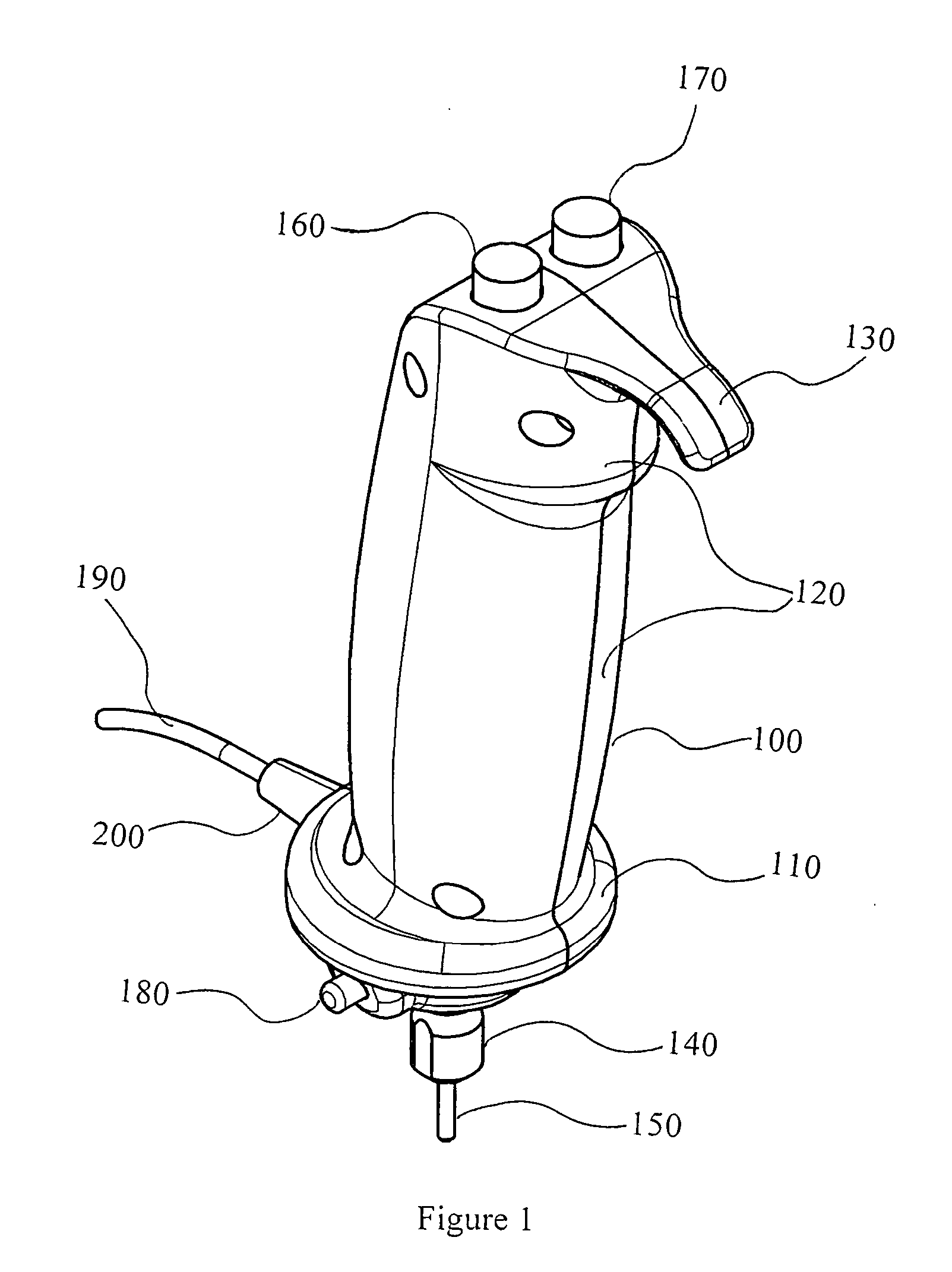However, there are several limitations which make these devices a less than desirable tool for extracting
dried blood samples from blood cards.
Due to the tension of the spring this operation can create fatigue in the finger, hand and
wrist muscles after only a few sample punches are produced, and increase in fatigue over a lengthier period of repetitive
punching.
Therefore repetitive
stress injury may develop quickly with this type of punch where even the smallest sampling pools to be collected become an arduous and painful task.
While the punch and die on this unit remain open at all times allowing for quick
insertion of source material for sampling, the vertical height of the
throat between the punch and die on these punches may not be large enough to
handle some blood cards of greater thickness, or versatile to sample other materials soft enough to be sampled with this instrument but too thick to be inserted.
Another problem with these punches is that the horizontal length of the
throat is limited and therefore may
restrict sampling over all surface areas and locations of a particular blood card.
Sampling directly from the center of the card is not possible with a conventional paper punch because the horizontal
throat of the punch is less than the distance from the edge of the card to the center of the card.
Therefore this type of punch is limited to sampling blood cards with surface dimensions that ensures the card can be inserted to allow the punch to reach any location on the surface where the blood may have collected.
These types of punches are restricted in their application to primarily sampling blood cards and cannot suitably sample gels, tissue or other soft substrates.
Because plants have a liquid component in the leaves, repeated sampling allows for a build up of
plant saps which cause samples to adhere to the punch and are not easily transferred through the die.
However, since there is no punch and die mechanism the sample must rest on a pliable support.
However, the Uni-Core is still not suited for high
throughput as repetitive
stress injury will develop with prolonged use.
Both the paper punch and Harris Uni-Core are manual punches and are not designed to punch or core a sample directly into a collection
vial, however, the paper punch can accomplish this but not with consistent speed and repetition.
However, delivery of sample is not visible to the operator and therefore cannot be confirmed after each operation.
Again a punch and die mechanism is used and this can create artefacts and lead to cross
contamination.
This
system is also restricted to sampling 96-spot blood cards and only samples with thicknesses equivalent to blood cards.
These former examples of prior art, while functional, are not suited for high
throughput sampling regimes, and, with the exception of the Harris Uni-Core, may only be used with blood cards of a limited surface area and thickness.
These systems are only designed to sample blood cards and no other source material.
There are no hopper feeding systems for automated feeding of cards, and therefore each card must be inserted manually.
This may create a safety issue as one or both hands may be used and therefore places the operators fingers in the vicinity of the punch.
If the operation is not synchronized, the pedal or platen activation may result in operator injury.
This may result in fibers becoming entangled with samples due to static build up and may lead to cross
contamination.
These systems offer increased
throughput but may not offer the expected confidence that the samples generated are always delivered where expected nor that there is no cross contamination occurring between subsequent samplings.
Contamination becomes a
chronic condition of these sampling tools which is not always easy to monitor nor are the systems designed to monitor the creation and dispersion of such artefacts.
The sample may now be directed into a well or
vial and the operator can visually confirm delivery, which is not possible on the prior art automated
punching systems.
The tips are disposable and can be easily replaced which is not possible with the prior art manual or automated punching systems.
There are disadvantages with the prior art
coring tools, most notably the susceptibility of the operator to Repetitive
Stress Injury (RSI) and more specifically
Carpal Tunnel Syndrome (CTS), a condition which interferes with the use of the hand and is caused when too much pressure is put on the nerve that runs through the
wrist.
Even minimal use of the manual
coring device over short periods of time has lead to reported
wrist discomfort.
This discomfort is acerbated when the manual
coring device is used in high throughput sampling environments requiring extended daily use by a single operator.
When used in high throughput sampling regimes this can, and does, lead to repetitive
stress injury (RSI).
A search did not disclose any prior art electric coring tools for sample collecting.
 Login to View More
Login to View More  Login to View More
Login to View More 


